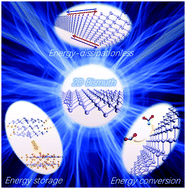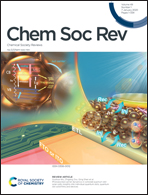Advances of 2D bismuth in energy sciences
Abstract
Since graphene has been successfully exfoliated, two-dimensional (2D) materials constitute a vibrant research field and open vast perspectives in high-performance applications. Among them, bismuthene and 2D bismuth (Bi) are unique with superior properties to fabricate state-of-the-art energy saving, storage and conversion devices. The largest experimentally determined bulk gap, even larger than those of stanene and antimonene, allows 2D Bi to be the most promising candidate to construct room-temperature topological insulators. Moreover, 2D Bi exhibits cyclability for high-performance sodium-ion batteries, and the enlarged surface together with the good electrochemical activity renders it an efficient electrocatalyst for energy conversion. Also, the air-stability of 2D Bi is better than that of silicene, germanene, phosphorene and arsenene, which could enable more practical applications. This review aims to thoroughly explore the fundamentals of 2D Bi and its improved fabrication methods, in order to further bridge gaps between theoretical predictions and experimental achievements in its energy-related applications. We begin with an introduction of the status of 2D Bi in the 2D-material family, which is followed by descriptions of its intrinsic properties along with various fabrication methods. The vast implications of 2D Bi for high-performance devices can be envisioned to add a new pillar in energy sciences. In addition, in the context of recent pioneering studies on moiré superlattices of other 2D materials, we hope that the improved manipulation techniques of bismuthene, along with its unique properties, might even enable 2D Bi to play an important role in future energy-related twistronics.



 Please wait while we load your content...
Please wait while we load your content...